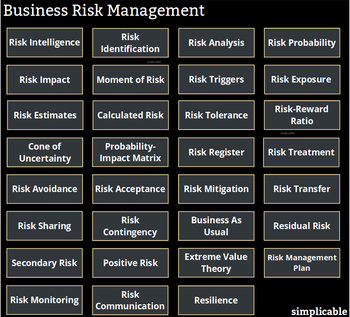
Health
It is common for healthcare related practices to seek to minimize risk. For example, minimizing the risk of infection after an operation.Safety
Safety related practices such as aircraft maintenance.Dread Risks
It is common for societies, organizations and individuals to minimize risks they fear. In some cases, this generates significant secondary risks. For example, a society that fears a falling economic growth rate may take extreme steps to support growth that cause an asset price bubble that eventually causes harm to the economy.Existential Risks
In theory, it makes sense to minimize extremely high impact risks.Risk Tolerance
Individuals or organizations with low risk tolerance may seek to minimize many risks. This may neglect opportunity costs and cause secondary risks.| Overview: Risk Minimization | ||
Type | ||
Definition | The process of doing everything possible to reduce the probability and/or impact of a risk towards zero. | |
Related Concepts | ||































